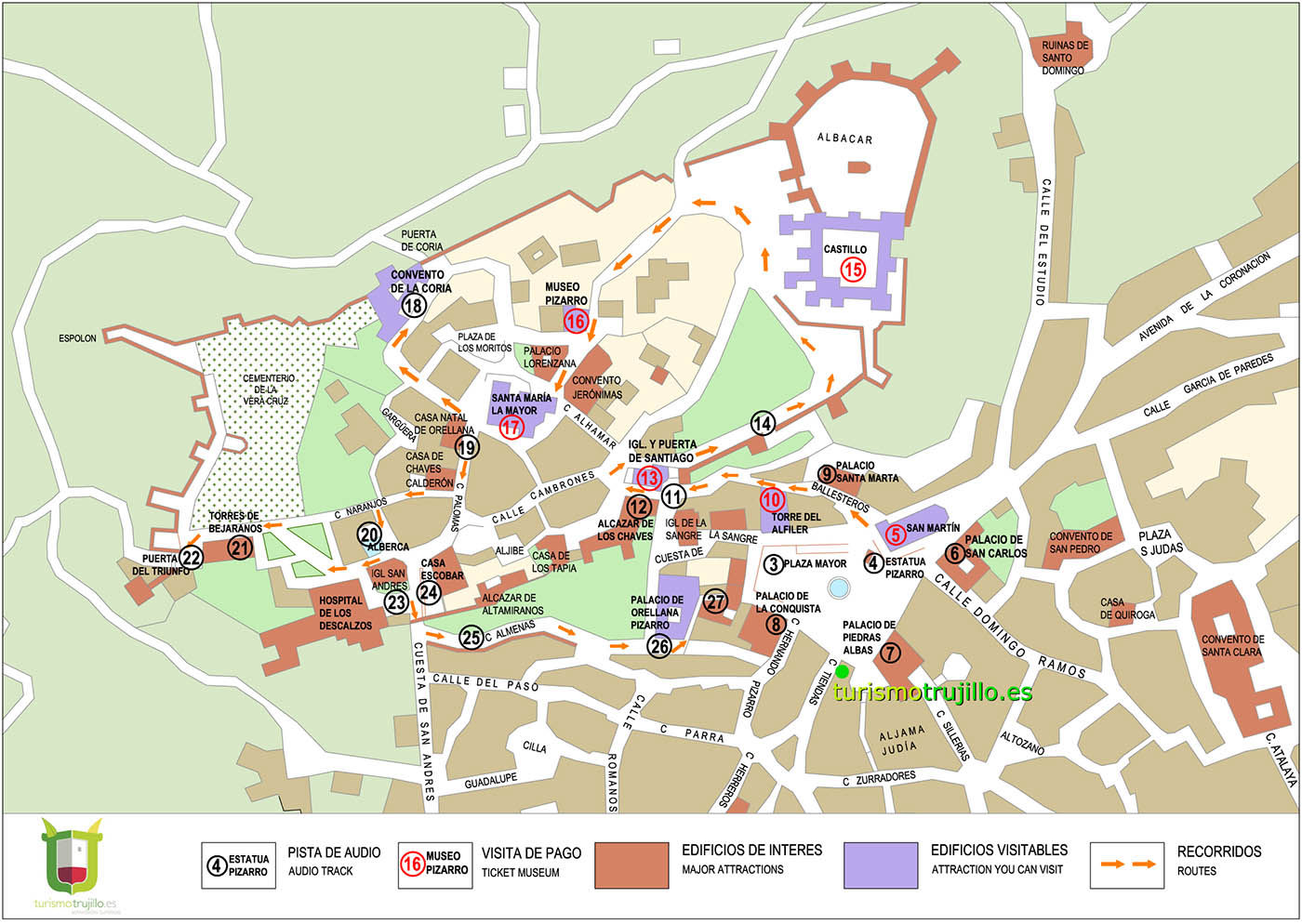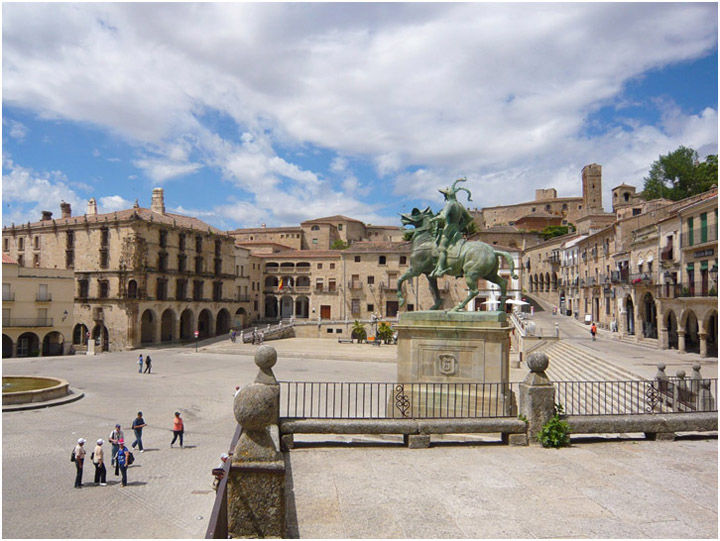
1. INTRODUCTION

Note: In this web page is not avaliable all audios. You can rent this audio guide service in Turismo Trujillo.
Welcome to Trujillo!
With this audio guide we will show you Trujillo and we’ll help you discover the most important places and monuments of a city full of history. It´s castle, palaces, churches, towers, ancestral residences and convents talk us about a past that remains and refuses to disappear. Trujillo is located 567 meters above the sea level, between the basin of Tagus and Guadiana Rivers. This city counts with a population of 10.000 citizens and is set in a hill surrounded by a peculiar landscape called The Berrocal, which is notorious by its granite outcrops. A popular folk song talks about it: “Whenever you go to Trujillo, wherever you come in, you will find a stony ground mile.”
In the middle Ages, Trujillo was a walled city, which was accessed by 7 doors, of which only 5 remain. As the population grew, Trujillo gradually expanded and new settlements sprouted up beyond its walls such as the Saint Martin district. It was named after the church around it was initially established: the Saint Martin church.
2. HISTORY
In Trujillo there has been found traces of Megalithic, Vetton, Celtic and Iberian civilizations. It was called Turgalium by the Romans and later Taryala by the Arabs, whose presence from 8th to 13th centuries was the longest. They built the castle and the walls to strengthen its defense, creating this fortification called La Alcazaba. The village was finally conquered by the Christians in 1232. People from the North came to re-populate this land. Families such as the Altamiranos, the Bejaranos and the Añascos participated in the conquest. The Spanish crown rewarded them for their service with lands and economic and political power.
King John II of Castile gave Trujillo the title of city in 1430 and Henry IV granted it the privilege of free market on Thursdays. Trujillo always had a strategic importance for the Spanish crown, that’s why the Catholic Monarchs visited the city several times. During one of these visits, Isabel I of Castile expelled Joanna la Beltraneja and the Marquis of Villena from the city. They had to escape to Plasencia. Ferdinand II of Aragon died in Madrigalejo, a municipality belonging to Trujillo´s jurisdiction. The King’s Magistrate together with some aldermen, in mourning clothes, came to Trujillo to bear witness to the King’s death.
Charles V, during a visit to the city, confirms the privilege of the free market to operate without the 10% sales tax. His son Philip II, after staying in The House of the Chain, called this way because of the chain hanging from its door’s lintel, gave this house the right of giving asylum. This meant that any prisoner fleeing justice could take refuge with the lord of the house and avoid immediate arrest. In the reign of Philip IV, the Royal Mint started working. The Mint would take care of coinage in all Extremadura.
Trujillo is also famous because it is the birthplace of Francisco Pizarro and his brothers Hernando, Juan y Gonzalo, the conquerors of the Inca Empire; Francisco de Orellana, who discovered the Amazon River; priest Jerónimo of Loaysa who was the first archbishop of Lima and Francisco Becerra, who constructed cathedrals in the New World.
During the 16th century Trujillo reached its highest prosperity being influenced by the Renaissance, which contributed to develop the architecture. There appeared religious and civil works outside the city walls. These works turned the city described in this audioguide into one of the most beautiful places in Extremadura. The Main Square became the principal center of daily activities, where feasts and all kinds of celebrations would be held. The part lying within the city walls and the one lying outside started evolving differently. Inside the city wall the defensive aspect of fortifications and solid houses was reinforced while beyond the walls a Renaissance style was established.

Bluehertz Audio guides has developed for Turismo Trujillo an audio guide service avaliable in Spanish and English languages.
You can rent this audio guide service visiting:
Turismo Trujillo: C/ Tiendas, 3 - 10200 - Trujillo.
- Tel.: + 34 - 927 320 510 - www.turismotrujillo.es - info@turismotrujillo.es -
Back to index